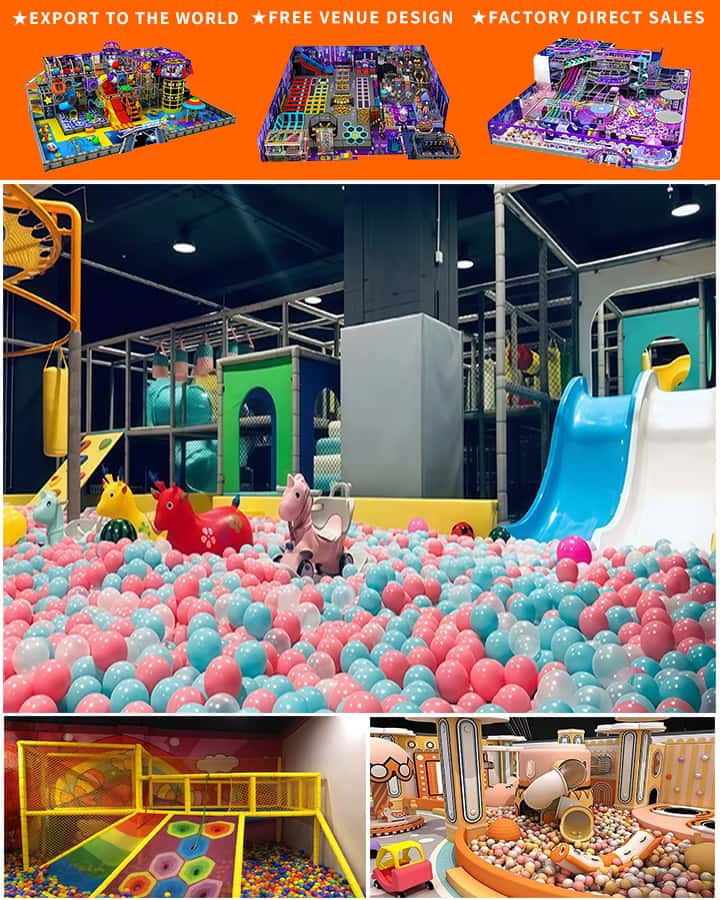In recent years, indoor playground businesses have emerged as highly profitable ventures, captivating both entrepreneurs and families alike. These dynamic play spaces offer a unique blend of entertainment, physical activity, and community engagement, making them an attractive option for investors looking to tap into the growing demand for family-oriented recreational activities. This article explores the factors contributing to the profitability of indoor playground businesses and offers insights into how they can successfully navigate the competitive landscape.
The Rising Popularity of Indoor Playgrounds
The appeal of indoor playgrounds lies in their ability to provide a safe and controlled environment where children can engage in active play regardless of weather conditions. Unlike traditional outdoor playgrounds, indoor facilities are equipped with a variety of attractions, including climbing structures, ball pits, trampolines, and interactive games, ensuring endless fun for kids of all ages. Additionally, indoor playgrounds often host organized events, birthday parties, and educational programs, further enhancing their allure.
The shift towards health and wellness among parents has also fueled the demand for indoor play spaces. With increasing concerns about childhood obesity and sedentary lifestyles, parents are actively seeking out environments that encourage physical activity. Indoor playgrounds offer a convenient solution, combining exercise with entertainment in a climate-controlled setting. As a result, these establishments have become popular destinations for family outings, playdates, and school field trips.
Key Factors Driving Profitability
Several factors contribute to the profitability of indoor playground businesses, including:
Diverse Revenue Streams

Successful indoor playgrounds leverage multiple revenue streams to maximize profitability. Admission fees form the primary source of income, but savvy operators also generate additional revenue through membership programs, party bookings, concessions, merchandise sales, and special events. By diversifying income sources, indoor playgrounds can mitigate financial risks and ensure a steady cash flow throughout the year.
High Customer Retention Rates
Building a loyal customer base is crucial for long-term success in the indoor playground industry. Many establishments offer membership plans that provide unlimited access to facilities, exclusive discounts, and other perks, encouraging frequent visits and fostering customer loyalty. Moreover, by hosting regular events and offering personalized services, indoor playgrounds can create strong emotional connections with families, leading to repeat business and positive word-of-mouth referrals.
Efficient Operations and Cost Management
Profitability in the indoor playground business hinges on efficient operations and meticulous cost management. Strategic location selection, energy-efficient equipment, and optimized staff scheduling are some of the ways operators can minimize overhead costs without compromising on the quality of service. Investing in durable, low-maintenance play equipment also helps reduce replacement expenses over time, contributing to higher profit margins.
Adaptation to Market Trends
Staying ahead of market trends is essential for maintaining a competitive edge. Indoor playgrounds must continuously innovate and adapt to changing preferences among their target audience. Incorporating new technologies such as virtual reality (VR) experiences, interactive projections, and digital gaming can elevate the overall experience and attract tech-savvy families. Additionally, offering specialized play areas catering to different age groups or interests (e.g., sensory play zones for children with autism) demonstrates a commitment to inclusivity and broadens the customer base.
Challenges and Mitigation Strategies
While the indoor playground industry presents promising opportunities for profitability, it is not without its challenges. High initial investment costs, regulatory compliance, and intense competition are common hurdles faced by aspiring entrepreneurs. However, careful planning and strategic execution can help overcome these obstacles:
Thorough Market Research: Conduct comprehensive market research to identify gaps in the local market, understand customer needs, and assess competition. This will inform decisions about facility design, pricing strategies, and marketing campaigns.
Strong Branding and Marketing: Develop a compelling brand identity and invest in targeted marketing efforts to build awareness and attract customers. Utilize social media platforms, influencer partnerships, and community engagement initiatives to reach your target audience effectively.
Regulatory Compliance: Ensure adherence to safety regulations and obtain necessary permits before launching your indoor playground. Regularly inspect and maintain equipment to uphold safety standards and avoid potential legal issues.
Customer Feedback and Continuous Improvement: Prioritize customer satisfaction by actively seeking feedback and implementing improvements based on suggestions. Offering excellent customer service and addressing any concerns promptly will enhance your reputation and foster repeat business.
Conclusion
The indoor playground business stands as a testament to the thriving intersection of recreation, fitness, and community engagement. By capitalizing on the rising popularity of these family-friendly entertainment hubs, entrepreneurs can unlock substantial profits while making a positive impact on the lives of children and their families. Through strategic planning, diversified revenue streams, efficient operations, and adaptation to evolving trends, indoor playground businesses can thrive in today’s competitive marketplace, solidifying their position as lucrative investments for the foreseeable future.




